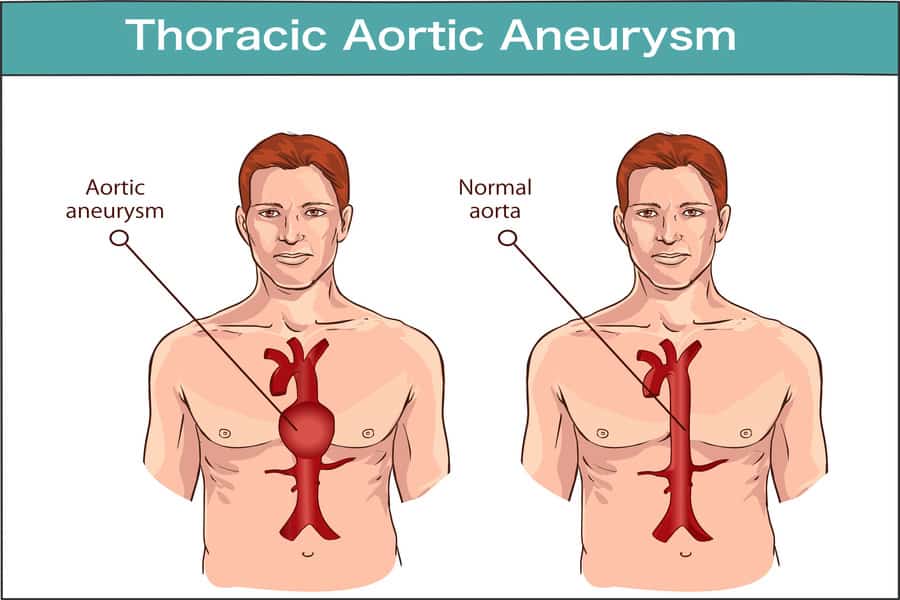The complexities of the human body and its vast network of blood vessels are awe-inspiring. Among these vessels, the aorta stands out due to its critical role in our cardiovascular system. However, like all parts of the body, the aorta is susceptible to certain conditions, one of which is the aortic aneurysm. This article provides an in-depth exploration of aortic aneurysms, delving into its definition, types, symptoms, causes, risk factors, and preventive measures.
Definition and Understanding
An aortic aneurysm, in simple terms, is the enlargement or bulging of a section of the aorta. The aorta, being the primary artery transporting oxygen-rich blood from the heart to the rest of the body, is of paramount importance. When a section of this artery weakens, it can expand abnormally or balloon outward. Should this balloon rupture, it can cause catastrophic internal bleeding, which often results in fatal outcomes.
Types of Aortic Aneurysms
There are two primary categories based on their location:
- Thoracic Aortic Aneurysms (TAA): These occur in the part of the aorta that runs through the chest. They can further be subdivided based on their exact location and shape.
- Abdominal Aortic Aneurysms (AAA): Occurring below the chest, these aneurysms are more prevalent than TAAs. They’re found in the part of the aorta that passes through the abdomen.
Symptoms and Recognition
Often termed the “silent killer,” many aortic aneurysms remain asymptomatic until they reach an advanced stage or rupture. When symptoms manifest, they can vary based on the aneurysm’s location:
- Thoracic Aortic Aneurysms may cause:
- Pain in the jaw, neck, chest, or upper back.
- Coughing, hoarseness, or difficulty breathing.
- Difficulty swallowing.
- Abdominal Aortic Aneurysms can lead to:
- A pulsating sensation near the navel.
- Persistent pain or tenderness in the abdomen or on the side.
- Radiating pain from the back or legs.
Symptoms of a rupture include sudden, intense, and persistent pain, clamminess, dizziness, rapid heart rate, and shock. If any of these are experienced, immediate medical attention is paramount.
Understanding the Causes
While the exact origin of an aortic aneurysm is not always clear, various factors can contribute:
- Atherosclerosis: Often known as the hardening of the arteries, this involves the buildup of fat and other substances that can weaken arterial walls.
- High Blood Pressure: Chronic hypertension can place undue stress on the arterial walls.
- Infections: Rarely, infections can affect the aorta, leading to aneurysms.
- Trauma: Serious accidents can lead to aneurysms.
- Genetic conditions: Some inherited conditions make an individual more susceptible.
Risk Factors Elucidated
While anyone can develop an aortic aneurysm, certain factors amplify the risk:
- Age and Gender: Men over 60 have a heightened risk.
- Tobacco: Smoking or a history of smoking exponentially increases the risk.
- Genetics: A family history of the condition can be a precursor.
- Ethnicity: White individuals are at a higher risk compared to other racial groups.
- Previous Aneurysms: Those who have had an aneurysm in another large blood vessel are at an increased risk.
Prevention and Lifestyle Choices
A proactive approach towards health can significantly decrease the chances of developing an aortic aneurysm:
- Regular Medical Check-ups: Especially beneficial for those with a family history.
- Limiting Tobacco and Alcohol: Restricting or eliminating the intake of these substances can make a considerable difference.
- Healthy Diet: Prioritizing a balanced diet, rich in fruits, vegetables, whole grains, lean proteins, and low-fat dairy, can promote overall cardiovascular health.
- Maintaining Optimal Blood Pressure: Regular monitoring, medication, and lifestyle choices can help in managing blood pressure.
When Medical Advice is Crucial
If one has risk factors or experiences symptoms that suggest an aortic aneurysm, a visit to the healthcare provider shouldn’t be delayed. Diagnostic tests, including ultrasounds, CT scans, and MRIs, can be instrumental in early detection.
The silent nature of aortic aneurysms, combined with their potential lethality, makes understanding and awareness essential. Modern medicine, combined with lifestyle choices, can play a pivotal role in managing and even preventing this condition. It’s a reminder of the importance of routine health check-ups and leading a balanced, healthy life.









